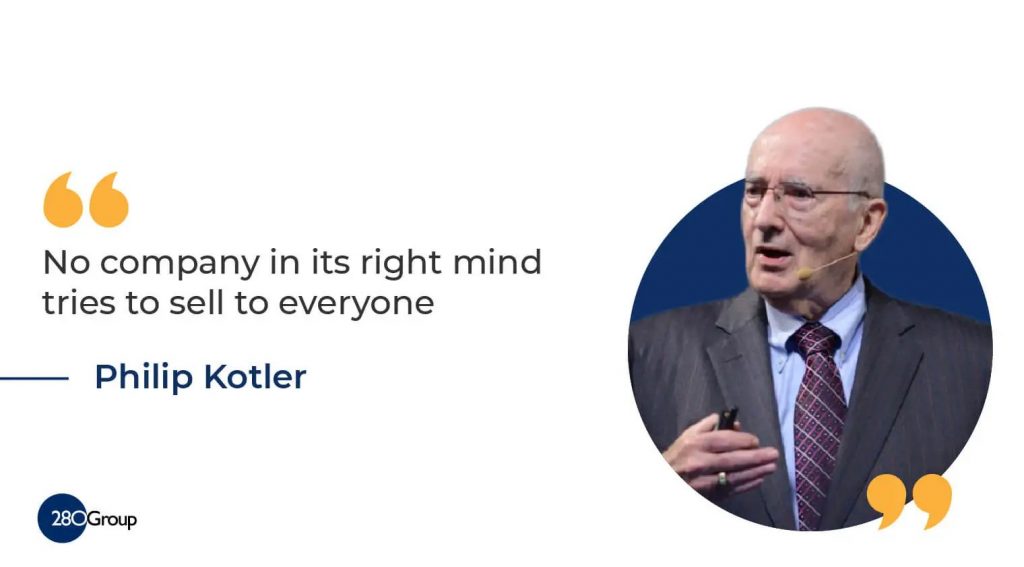
Marketing professionals will tell you that it’s impossible to promote a product or service if you don’t know who needs your product or why they need it. The “spray and pray” method — sending your message out to a wide audience and crossing your fingers that a portion of them will be interested — is ineffective and often a waste of money. Different people may want your product for different reasons, and piquing their interest will require you to highlight different aspects of your product or service in your messaging.
TL;DR
- A persona is an archetype of a group of people with common behavior and needs.
- Using personas makes it easier for you to build products and messaging towards your target market.
- Personas make it easier to treat your ideal buyers/users as human beings.
- 10 questions to ask yourself when creating a persona, (which should be answered with facts and data).
Imagine two car buyers visit a dealership looking for an SUV. One is a soccer mom looking for a spacious vehicle to transport her daughter’s team members — and all of their equipment — to games. The other is a 25-year-old serious mountain biker who needs a rugged and reliable vehicle for off-roading and hauling his gear. These two car buyers want the same SUV, but for very different reasons.
And what if your messaging doesn’t address the needs of either buyer? For example, an ad that touts the vehicle’s fancy interior would be completely ineffective, wasting your ad spend and possibly resulting in both people buying from your competitor.

A better, more cost-effective approach is to first figure out your target audience, then break them up into smaller groups of people with similar characteristics. In marketing speak, this is called “market segmentation.” Creating “personas” takes market segmentation to the next level, identifying the characteristics of a “typical buyer” and what their needs are. Developing personas is an extremely effective way to fine-tune messaging for maximum impact.
What Is A Persona?
A persona is an archetype of a group of people with common behavior and needs. It includes a target buyer’s goals, role, background, attitudes, and other insights. Marketing teams will often create a fictional character, complete with a backstory, and describe in detail his or her behaviors, preferences, and needs. Here are two examples:
Nancy is a 38-year old soccer mom who works from home and enjoys being involved in her daughter’s sports. She is fit and educated, and frequently volunteers for her daughter’s school. She is very social and stylish, and feels the type of vehicle she drives must reflect her upper middle-class status. Nancy watches a lot of TV and could be persuaded to buy products (or cars) that celebrities promote.
Brad is a software engineer who is constantly under pressure to meet tight deadlines. However, his wife and children think he should be home earlier in the evening. He’s looking for digital tools that help him do his work more efficiently, but his department has a tight budget, so price is an important factor. Brad is turned off by marketing speak —he wants just the facts.
Personas provide marketers with a more visual and human representation of the market segment they’re trying to reach, making it easier to develop content and messaging that targets the audience effectively. According to MarketingInsiderGroup, 93% of companies who exceed lead and revenue goals segment their database by buyer persona. Personas can also assist in defining product requirements, because they help developers and Product Managers prioritize product features and capabilities during development.
93% of companies who exceed lead and revenue goals segment their database by buyer persona.
How Do You Create a Persona?
Creating personas begins with effective market segmentation. Product Managers typically work with marketing teams to segment markets into groups of people that have similar characteristics, goals, and needs. These “segments” are portions of the total addressable market.
Segmentation is a data-driven practice that yields a quantitative result. In segmenting a market, Product Managers must leverage information from market research, customer surveys, website behaviors, and more to find commonalities and define groups of people with similar attributes. From there, personas can be created, bringing individuals within the various segments to life.
Once you’ve completed your market research and divided your market into segments, work with your team to answer the following questions about potential personas within those segments. Here are some questions you can explore:
- What name can we assign to this persona?
- What is her background?
- What are his goals and aspirations?
- What problem is she trying to solve?
- What matters to him, personally and professionally?
- How can our product meet her specific needs?
- How will they use our product in their daily life?
- What features or attributes of our product are attractive to her?
- What might prevent him from purchasing our product?
- How will our product enrich their personal or professional life?
One caution when developing your persona: answer the questions above using facts and data. The more you let opinions or fun ideas influence your persona, the less that persona will accurately represent your customers.
Brainstorming around these questions with your team can not only help you define your product and its place in the market so you can fine-tune your go-to-market strategy, it can illuminate potential gaps or shortcomings in your product offering. This information paves the way for innovative thinking that can further differentiate your product and make it even more marketable to your target audience.
Adding a Human Touch
While defining market segments and personas makes crafting marketing messages easier, it’s also extremely useful for product development. Understanding who will buy your product at a very detailed level can simplify and accelerate decisions around product features and functionality. It helps prioritize what features to work on first, and what features can be deprioritized or delayed for future releases, especially if the budget and schedule are tight.
Market segmentation and persona development are skills you can learn and practice. Check out 280 Group’s Optimal Product Management course to learn in-depth how to build user and buyer personas effectively for your primary market segments. The course teaches you how personas put a face on your customer, humanizing your audience and giving everyone involved in developing, marketing, and selling the product greater incentive to do their best work for the sake of the customer.


